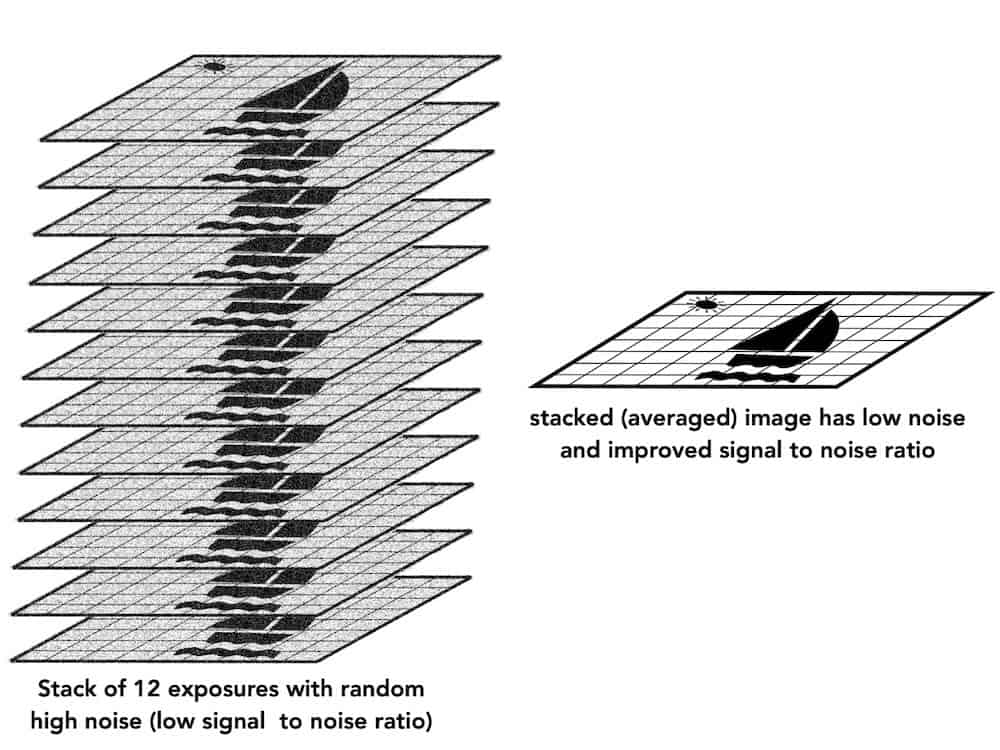

- IMAGE STACKING SOFTWARE HOW TO
- IMAGE STACKING SOFTWARE FULL
- IMAGE STACKING SOFTWARE SOFTWARE
- IMAGE STACKING SOFTWARE ISO
But with some processing work, we can do much better than this. It’s a great image with sharp focus and good brightness. Many people would proudly share such an image online with little to no other post-processing and be quite happy with it. The moon occupies a rather small space near the centre of the frame. This is the RAW file as it came off the camera converted to JPG without any editing.

Or for faster acquisition, I could have used my D750 at 60 fps. I could easily have also shot HD video of the moon at 30 fps with the same exposure settings and used the resulting video to process in the next step.

I also shot 10 dark frames (images shot at the same setting but with lens cap on) to reduce noise.
IMAGE STACKING SOFTWARE ISO
My camera was set at ISO 100 with exposures of 1/160 of a second. Once again, you’ll need to readjust your framing every so often to keep the moon in frame.įor this project, I shot 470 images of the moon. You can also shoot the moon with a manually tracked telescope on any type of mount. Since you won’t be tracking, you’ll have to manually readjust your framing from time to time to keep the moon in your field of view. You can also shoot the moon easily with a 300+mm lens on a stationary tripod. Tracking isn’t necessarily required to shoot the moon.
IMAGE STACKING SOFTWARE FULL
Craters will be seen in astounding detail, but if you wish to see the entire moon, a DSLR is the only way to go unless you want to take potentially dozens of videos, stack them into images and then create a full panorama of the moon.įor this lunar image, I used a Nikon D5100 attached to an Explore Scientific 80ED apochromatic telescope mounted on a Celestron Advanced VX mount. Using such a webcam results in very high magnification views of the moon. The moon, however, is a much bigger target. Planetary imaging is very difficult with a DSLR at prime focus and generally not recommended. Planets are so small that they are still tiny in the field of view at that resolution. The camera is set to capture high frame rate / low resolution video like 30-60 fps at 640 x 480 resolution. Generally, this is also the method used with a DSLR. These webcams will typically shoot exposures of 30 to 100 frames per second, or 1/30th to 1/100th of a second. Since solar system objects are very bright compared to deep space objects, exposures of more than a few fractions of a second will blow them out completely. Solar system imaging is generally done with a dedicated webcam type camera attached to a telescope instead of a DSLR, and the camera shoots video instead of still frames.
IMAGE STACKING SOFTWARE SOFTWARE
There are different software programs that take care of each step, each requiring its own unique processes, but these are the main steps required. The mechanics of processing the moon, sun, or planets vary slightly in process and equipment, but they all contain these steps. These are the major steps involved in processing a solar system image.
IMAGE STACKING SOFTWARE HOW TO
In this case, I won’t be covering the fine details of how to use each and every program used in the process, but will talk about the basic workflow that applies to any software you do this with. This article will be focusing on lunar stacking. Those process of stacking deep sky and solar system images is completely different, but the end goal is the same – to bring out as much fine detail in an image while cancelling out digital noise. With each additional stacked image, more signal is added to the final image while background noise is reduced. Stacking – whether for deep sky or solar system – is the process of taking multiple images of the same object and digitally combining the images to increase the signal to noise ratio. These days, several shorter exposure are stacked together to create a final image. Unlike the days of film, there are no longer single 30+ minute exposures of celestial objects taken. Stacking is a very familiar process to most astrophotographers. To stack, or not to stack? Most astrophotographers will agree it’s necessity with deep sky images, but is it really necessary for lunar imaging when the moon is so big and bright in the sky? There are a lot of single frame photos of the moon that show incredible detail, so is it really worthwhile going through the process of taking dozens, or even hundreds or thousands of images and then stacking them? Are the results really that visible? In this article, I we’ll go through the process of stacking a lunar image and see the results at each step along the way.


 0 kommentar(er)
0 kommentar(er)
